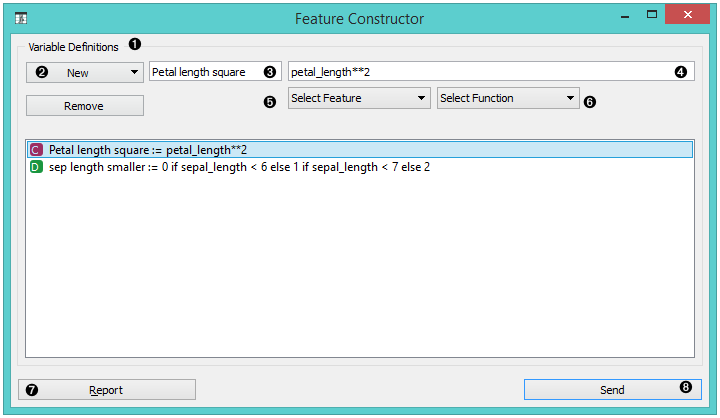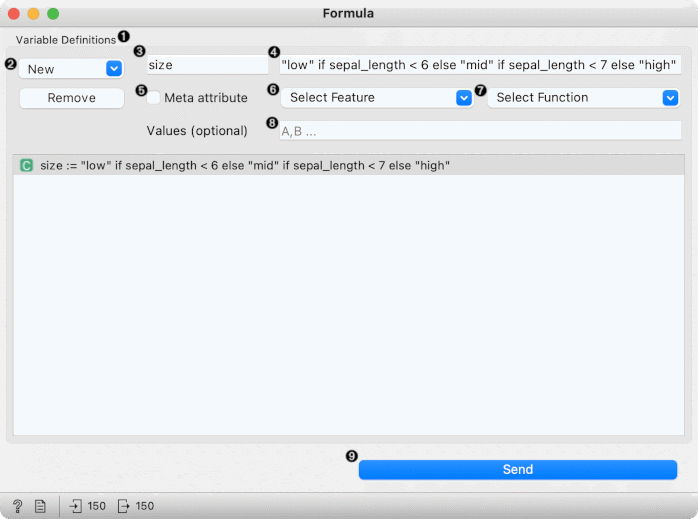Formula¶
Add new features to your dataset.
Inputs
Data: input dataset
Outputs
Data: dataset with additional features
Formula allows computing new columns by combining the existing ones with a user-defined expression. The resulting column can be categorical, numerical or textual.
For numeric variables, it sufices to provide a name and an expression.

List of constructed variables
Add or remove variables
New feature name
Expression in Python
Select a feature
Select a function
Produce a report
Press Send to communicate changes
The following example shows construction of a categorical variable: its value is "lower" is "sepal length" is below 6, "mid" if it is at least 6 but below 7, and "higher" otherwise. Note that spaces need to be replaced by underscores (sepal_length).

List of variable definitions
Add or remove variables
New feature name
Expression in Python
If checked, the feature is put among meta attributes
Select a feature to use in expression
Select a function to use in expression
Optional list of values, used to define their order
Press Send to compute and output data
Hints¶
If you are unfamiliar with Python math language, here's a quick introduction.
Expressions can use the following operators:
+,-,*,/: addition, subtraction, multiplication, division//: integer division%: remainder after integer division**: exponentiation (for square root square by 0.5)<,>,<=,>=less than, greater than, less or equal, greater or equal==equal!=not equalif-else: value
ifcondition else other-value (see the above example
See more here.